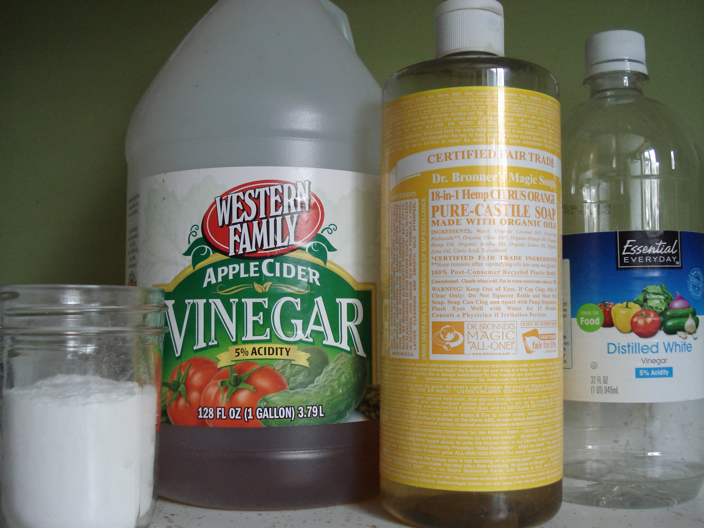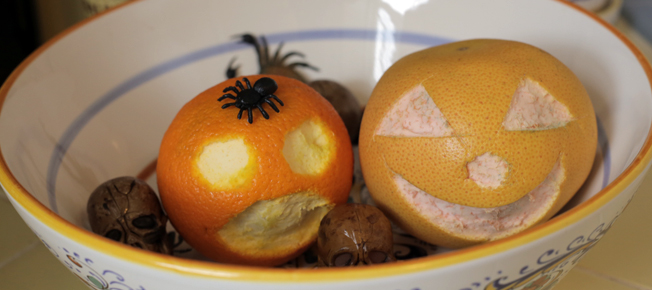Usually good style comes at a price: though minimalist decor is in right now, even that style is not minimal on your wallet. But what I have learned from a little experimenting is that you actually can design on a budget, if you get a little creative, and do things yourself instead of buying them. I tend to stay away from the lengthy, more complex projects, so I found some easy DIY projects that will make your simple home more exciting.
Bookshelves

Photos by Christina M. Tedesco
One way to spruce up your bookshelves is to de-clutter! Usually when things don’t look right, we instinctively add more to it; however, you can make your bookshelves look super cute by taking away all the busy stuff and only displaying a select group of things. Bookends come in handy here, whether you buy them or find something unique to hold the books in place. This way, you can spread your books throughout the bookshelf and add some things in between to please the eye (i.e. a small vase, a picture frame, a decorative bowl, etc.). This makes the whole shelf flow much better.
Instead of painting bookshelves, which takes time and money, I read an article about covering the insides with wallpaper. Now, wallpaper can also be a little expensive and difficult to work with, so an alternative is contact paper—it’s cheap, cute, and removable. Plus, if you get bored with it, you can keep switching it out with new designs!

Photos by Christina M. Tedesco
DIY Dresser
This one was exciting! I only needed a small dresser to hold some things I could not hang up. I found a solid wood dresser at IKEA for only $35. Choosing solid wood over other choices gives you the option of being a little more creative with it. I wanted to go for cute, but simple. I bought the smallest can of paint I could find for $5, assembled the dresser, and painted it. I also plan to order new knobs for it. Knobs can be pretty pricey, but it makes a difference! Urban Outfitters has super cute knobs for a good price. The total cost of my custom dresser came to $76.

Photos by Christina M. Tedesco
Not Your Normal Vase
One thing I learned upon being a “grown up” is that flower vases can be surprisingly expensive! In this category, some thinking out of the box can go a long way. I had a cheap soap pump whose look I really loved, but the actual pump had stopped working. I threw away the pump and tied a ribbon around the top of the bottle. I arrange smaller flowers in there, and it makes a great piece to fill up an empty space.

Photos by Christina M. Tedesco
Changing out flowers in your vase based on the season is a great way to bring a theme and some color into your home. Right now is a perfect time for tulips, daffodils and any of the more vibrant flowers. I also use a tin watering can as a vase, this goes well with dried flowers or autumn flowers.
Plants
Another great way to brighten up a room is to grow or buy plants. Growing your own plants is fun and cheap, but definitely time-consuming. It takes a while for a seed to fully bloom, but it’s so exciting when you first see it start to poke through the dirt. A short cut for those lacking green thumbs, or patience, is buying your own plants: this way, you don’t have a bunch of pots with just dirt all around your house while you wait for a sprout. Though buying plants is a little more expensive than growing your own, you can look for cheaper ones at your local nursery. When buying plants or seeds, pay attention to how big they grow and the amount of sunlight needed. If you don’t have space outdoors for them, they can always liven up a windowsill.

Photos by Christina M. Tedesco
A great way to add some decor to the kitchen, and save some money on spices, is to have a windowsill spice garden! Mine adds a great aesthetic to my kitchen, and it definitely makes me feel good when I can cook with something that I’ve grown! Spice plants are only a couple bucks from a nursery and are small enough to sit on your windowsill.
Dress Those Walls
Dressing up your walls makes a big difference. But when buying pictures and frames, the money starts to add up. One thing to remember is that you can do something fun with a bunch of small pictures instead of hanging a big one.
One of my favorite things I did with my current apartment was going online (in my case, to life.time.com) and finding 16 photos I loved. I cropped them to 4×6, then found frames at IKEA for only $2.99 per two pack. This total project cost me $24 and took up a big part of my wall. I just printed the photos on a normal printer: since the photos are pretty small and framed, it’s hard to tell that they’re on computer paper rather than (more expensive) photo paper.

Photos by Christina M. Tedesco
Posters
I love different film posters, and especially minimalist posters. Now, I know my limits, and I for-sure cannot make an awesome minimalist poster. But, I did play around in Photoshop with some photos and quotes from favorite movies and books and created my own 11×14 posters. I asked a co-worker in our art department to print them out for me, so I didn’t have to pay for printing! (If you don’t know anyone with a photo printer, I would highly recommend using Costco. If you don’t have a Costco Card, ask around: I’ve had lots of friends let me use theirs. Their prices are great and the quality of the photo is really nice.) At IKEA, I bought some 11×14 frames for $8 each.
Counter Space
Counters can seem plain and empty, but it’s easy to fill them up just using normal kitchen supplies, especially when you don’t have a lot of cabinet space. I really liked the idea of canisters with chalkboard labels, but I couldn’t find any cheaper than $8 each. But, on Amazon.com, I was able to buy a whole roll of chalk-paper to then affix to a $10 canister set I found on sale. You can cut out chalk-paper labels into your own designs or buy a paper-shape cutter and make the labels yourself. I also put the metal tins of my favorite tea out on my counter. It adds some color and the tins are actually really cute!
Keep in mind that you need to arrange your appliances in a way that makes use of your space, but you can also show off all your appliances at the same time. If you’re short on cabinet space, another decor idea is stacking your coffee cups against the wall. Or you can buy ceiling hooks, screw them under your cabinets, and hang up your mugs.

Photos by Christina M. Tedesco
If you have counter space in your bathroom, there’s a lot you can do to keep it organized while adding flare. Plants and candle holders are one good way to add that extra something that your bathroom is lacking. Wooden baskets are useful for holding hand towels and will also make your counter look less empty. Pretty jars with lids hide away Q-tips, cotton balls, and other necessities. Finally, a nice soap pump always adds a good touch.
In my bathroom, I also have a lot of wall space, so I bought more frames and some postcards from IKEA to keep my walls from looking empty and boring.
There are plenty of simple DIY ideas out there to make a difference in your home but not in your wallet—all it takes is some experimenting and creativity! If you have some more suggestions for our readers, feel free to leave a comment: we’d love to hear your creative ideas!


